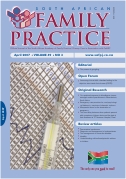Diagnosis and treatment of endometriosis
Keywords:
endometriosis, infertility
Abstract
Signs and symptoms of endometriosis are non-specific, and an acceptably accurate non-invasive diagnostic test has yet to be reported. Serum markers do not provide adequate diagnostic accuracy. The preferred method for diagnosis of endometriosis is surgical visual inspection of pelvic organs with histologic confirmation. Such diagnosis requires an experienced surgeon because the varied appearance of the disease allows less-obvious lesions to be overlooked. Empiric use of non-steroidal anti-inflammatory drugs or acetaminophen is a reasonable symptomatic treatment, but the effectiveness of these agents has not been well-studied. Oral contraceptive pills, medroxyprogesterone acetate, and intrauterine levonorgestrel are relatively effective for pain relief. Danazol and various gonadotropin-releasing hormone analogues also are effective but may have significant side effects. There is limited evidence that surgical ablation of endometriotic deposits may decrease pain and increase fertility rates in women with endometriosis. Presacral neurectomy is particularly beneficial in women with midline pelvic pain. Hysterectomy and bilateral salpingo-oophorectomy definitively treat pain from endometriosis at 10 years in 90 percent of patients. Permission from the AAFP was granted to publish this article in the hardcopy only. Kindly refer to www.aafp.org or subscribe to the hardcopy of South African Family Practice.
Section
CPD
By submitting manuscripts to SAFP, authors of original articles are assigning copyright to the South African Academy of Family Physicians. Copyright of review articles are assigned to the Publisher, Medpharm Publications (Pty) Ltd, unless otherwise specified. Authors may use their own work after publication without written permission, provided they acknowledge the original source. Individuals and academic institutions may freely copy and distribute articles published in SAFP for educational and research purposes without obtaining permission.

